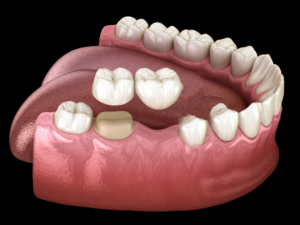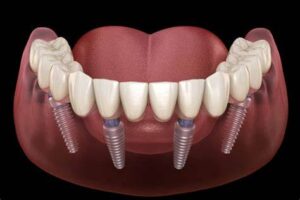Murray Hill Orthodontics
Contact
Hours
<ul id=”hours” style=”transition: height .3s ease;”>
<li>Monday: 9:00am – 9:00pm</li>
<li>Tuesday: 9:00am – 6:00pm</li>
<li>Wednesday: 9:00am – 9:00pm</li>
<li>Thursday: 9:00am – 9:00pm</li>
<li>Friday: 9:00am – 5:00pm</li>
</ul>
Murray Hill Orthodontics, located in the heart of New York, New York, is dedicated to providing exceptional orthodontic care in a warm and welcoming environment. Led by a team of experienced orthodontists, our practice combines personalized treatment plans with state-of-the-art technology to help patients achieve beautiful, healthy smiles. Whether you’re interested in traditional braces or clear aligners, Murray Hill Orthodontics offers a comprehensive range of orthodontic services to suit your needs.
Orthodontic Services
Traditional Braces
- Metal Braces: Time-tested orthodontic solution for correcting misaligned teeth and bite issues.
- Ceramic Braces: Clear or tooth-colored brackets for a more discreet orthodontic treatment option.
Clear Aligner Therapy
- Invisalign: Removable clear aligners for a virtually invisible way to straighten teeth without traditional braces.
- ClearCorrect: Transparent aligners that gradually shift teeth into alignment for a more aesthetically pleasing smile.
Comprehensive Orthodontic Care
Initial Consultation
- Orthodontic Evaluation: Thorough assessment to determine the most suitable treatment plan for your individual needs and goals.
- Customized Treatment Plan: Tailored orthodontic approach designed to achieve optimal results while considering your lifestyle and preferences.
Orthodontic Treatment
- Braces Adjustment: Regular visits to ensure braces or aligners are properly adjusted for consistent progress and comfort.
- Interceptive Orthodontics: Early intervention to address orthodontic issues in children and prevent more serious problems from developing.
Patient Experience
Comfortable Environment
- Modern Facility: State-of-the-art office equipped with advanced orthodontic technology for efficient and effective treatment.
- Relaxing Atmosphere: Comfortable and inviting environment to help patients feel at ease during their orthodontic appointments.
Personalized Care
- Individualized Attention: Dedicated orthodontic team committed to providing personalized care and addressing your specific concerns throughout your treatment journey.
- Open Communication: Transparent communication about your treatment plan, progress, and any adjustments needed to ensure the best possible outcome.
Cantilever Dental Bridges
Cantilever dental bridges are a type of dental prosthesis used to replace missing teeth by anchoring the artificial tooth or teeth to adjacent natural teeth on only one side. Unlike traditional dental bridges, which rely on support from both sides of the gap, cantilever bridges utilize adjacent teeth on only one side for support. Here's an overview of cantilever dental bridges:
- Indications:
- Cantilever bridges are typically used when there is only one natural tooth adjacent to the edentulous (toothless) area that can serve as an abutment for the bridge.
- They are commonly employed in situations where replacing a single missing tooth in the posterior (back) region of the mouth.
- Treatment Planning:
- Before fabricating a cantilever bridge, the dentist will conduct a comprehensive examination of the patient's oral health, including assessing the condition of the adjacent teeth and the quality of the bone and soft tissues.
- Radiographic imaging, such as dental X-rays or CBCT scans, may be used to evaluate the bone density and determine the feasibility of placing a cantilever bridge.
- Preparation:
- The adjacent natural tooth serving as the abutment for the cantilever bridge will be prepared by removing a portion of its enamel to create space for the bridge.
- Local anesthesia is typically administered to numb the tooth and surrounding tissues to ensure the patient's comfort during the procedure.
- Impression and Fabrication:
- Once the abutment tooth is prepared, impressions (molds) of the teeth and surrounding tissues are taken to create an accurate model of the dental arch.
- The dental laboratory uses these impressions to fabricate the cantilever bridge, customizing the size, shape, and color of the artificial tooth to match the patient's natural dentition.
- Placement and Cementation:
- The cantilever bridge is placed and cemented onto the prepared abutment tooth using dental adhesive cement, ensuring a secure and long-lasting restoration.
- The fit, occlusion (bite), and aesthetics of the bridge are checked by the dentist to ensure that it meets the patient's expectations.
- Any necessary adjustments are made to optimize the fit and function of the bridge.
- Postoperative Care:
- After the cantilever bridge is placed, the patient will receive instructions on postoperative care and maintenance.
- Regular dental check-ups and professional cleanings are important for monitoring the health and integrity of the bridge and surrounding teeth.
- Good oral hygiene practices, including daily brushing, flossing, and using antimicrobial mouthwash, are essential for maintaining the health of the bridge and preventing decay or gum disease.
Cantilever dental bridges offer a conservative and effective solution for replacing single missing teeth in situations where adjacent teeth are not suitable for traditional bridge placement. However, they may not be suitable for all cases, and the long-term success of a cantilever bridge depends on factors such as the strength and health of the supporting abutment tooth and proper oral hygiene maintenance. If you are considering a cantilever bridge, it's important to consult with a qualified dentist to determine the best treatment option for your individual needs.
Implant-supported Dentures
Implant-supported dentures are a type of dental restoration used to replace multiple missing teeth, typically an entire dental arch (either upper or lower), by anchoring the denture to dental implants. Unlike traditional dentures that rely solely on suction or adhesives for stability, implant-supported dentures are securely attached to dental implants embedded in the jawbone, providing increased stability, comfort, and chewing efficiency. Here's an overview of the process involved in placing implant-supported dentures:
- Evaluation and Treatment Planning:
- Before undergoing implant treatment, the patient will undergo a comprehensive dental examination, including clinical assessment and radiographic evaluation (such as dental X-rays or CBCT scans).
- The dentist or oral surgeon will assess the patient's oral health, bone density, and suitability for implant placement.
- A thorough treatment plan will be developed based on the patient's individual needs and goals.
- Implant Placement:
- The first step in the process involves surgically placing dental implants into the jawbone at strategic locations to support the denture.
- The number of implants needed depends on factors such as the size and shape of the jawbone, the stability of the implants, and the overall treatment plan.
- Implant placement is typically performed under local anesthesia to ensure the patient's comfort during the procedure.
- Healing and Osseointegration:
- After implant placement, a healing period of several months is usually required to allow for osseointegration to occur.
- During this time, the implants fuse with the surrounding bone tissue, becoming firmly anchored in the jawbone.
- Temporary restorations may be placed during the healing period to maintain aesthetics and function.
- Abutment Placement:
- Once osseointegration is complete, abutments are attached to the implants.
- Abutments are connector pieces that protrude from the gumline and serve as the attachment points for the implant-supported denture.
- Impressions and Fabrication of Denture:
- After the abutments are placed, impressions of the implant sites and surrounding tissues are taken to create a custom-made denture.
- The denture is fabricated in a dental laboratory using durable and lifelike materials that mimic the appearance and function of natural teeth.
- The denture is designed to fit securely over the abutments and provide optimal support and stability.
- Final Restoration:
- Once the denture is completed, it is attached to the abutments and secured in place using dental screws or other retention mechanisms.
- The denture is adjusted and polished to ensure proper fit, function, and aesthetics.
- The patient's bite and occlusion are checked to ensure comfort and stability.
- Postoperative Care and Maintenance:
- After the implant-supported denture is placed, the patient will receive instructions on postoperative care and maintenance.
- Regular dental check-ups and professional cleanings are essential to monitor the health of the implants and surrounding tissues.
- Good oral hygiene practices, including brushing, flossing, and using antimicrobial mouthwash, are important for long-term success.
Implant-supported dentures offer numerous benefits, including improved stability, comfort, and chewing efficiency compared to traditional dentures. With proper care and maintenance, an implant-supported denture can provide long-lasting and natural-looking results, enhancing both oral health and quality of life. If you are considering implant treatment, it's important to consult with a qualified dental professional to determine the best treatment plan for your individual needs.




